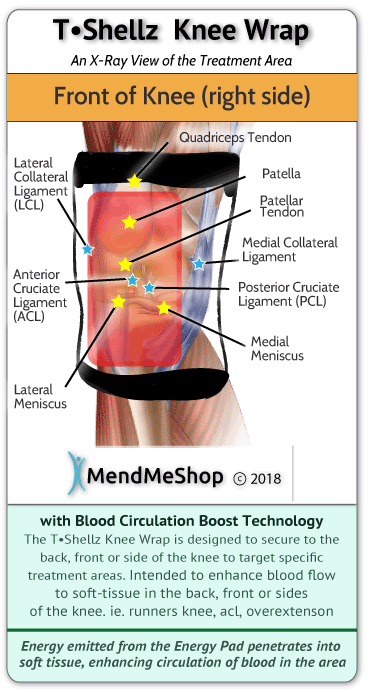 | What is Infrapatellar BursitisWhat are the Symptoms of Infrapatellar Bursitis?If you are suffering from infrapatellar bursitis, you may be experiencing swelling and tenderness, pain, limited range of motion, weakness, and possibly a fever if the bursa is infected. 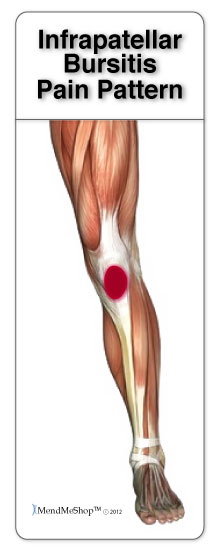 Knee Pain - you may experience pain and tenderness over top of the kneecap as the bursa sits over the kneecap. The pain may radiate down your leg to the midcalf. Due to the location of the bursa, pain will make kneeling difficult. This type of bursitis is also called Clergyman's Knee because it was a common condition among clergymen kneeling for prayer. Bursitis pain becomes worse during exercise or when you are climbing stairs, but can also increase by simply bending and straightening your knee. The knee pain caused by bursitis usually starts gradually and develops over a few days or even months. Difficulties Sleeping - Patients suffering from knee bursitis may also have interrupted sleep patterns. Simply bending your knee or rolling over during sleep can cause pressure on the inflamed bursa, increasing your pain. The pain can range from mild to very sharp depending on the amount of swelling and inflammation in the bursa. Many knee bursitis sufferers recommend placing a pillow between your knees/thighs while you sleep to reduce pain throughout the night. Swellling, Tenderness, Warmth, and Redness - Swelling is usually evident with infrapatellar bursitis and often appears as an abscess over or below the kneecap. This swelling may appear immediately following trauma, over a couple of hours, or up to 7-10 days after the event that caused the irritation. You may also notice warmth and visible redness on your skin in the area as inflammation in the bursa and along the tendons becomes more severe. 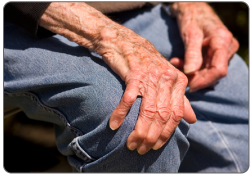 Limited Range of Motion and Weakness - Pain often limits your knee movements as you stop performing motions that make the pain worse. If bursitis is left untreated the inflammation can increase, causing more pain, limiting movement even more. Eventually, weakness in the leg muscles and and tendons around the knee can set in. As you lose strength in your quadriceps, your legs may begin to give out during daily activities. How Do I Diagnose Infrapatellar Bursitis?When you are experiencing knee pain, a visit to the doctor is always recommended, as there are many conditions that can cause knee pain such as a meniscus tear, an ACL sprain, patellar or quadriceps tendinitis, a fracture, and yes knee bursitis. Getting a proper diagnosis is important so you can treat your condition correctly.  To begin with, your doctor will gather a medical history about you and your current condition and symptoms. He/she will ask about the amount pain you are having with your knee. How long you have had your symptoms and if you are have range of motion loss with you leg and knee. Details about what caused the pain in the knee, when it started, and whether or not you have ever had treatments for this or a similar condition in the past, are very helpful in assessing your injury. A physical examination will be performed to determine if you have any signs of knee bursitis or other knee injury. He/she will visually assess and palpate (feel) the bones and soft tissue in both your knees to evaluate any differences between the two of them. This will identify any abnormalities, such as swelling, bone deformities, atrophied muscles, redness and/or warmth on the skin. In many cases, the first sign that you have knee bursitis is swelling at the joint. 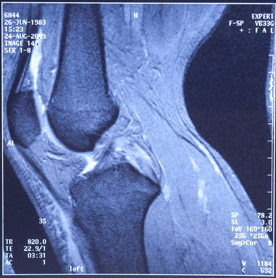 If a soft tissue injury is suspected, an MRI will likely be done to view where and how extensive the damage is. An x-ray may be recommended to rule out a bone spur or other foreign body as the cause of your knee pain. As the bursae in the knee are close to the surface of the skin, they are more susceptible to septic, or infectious, bursitis caused by a cut or scrape on the knee. Septic bursitis requires antibiotics to get rid of the infection. Your doctor will be able to determine whether there is an infection or not by drawing a small sample of the bursa fluid with a needle. What Causes Infrapatellar Bursitis?Inflammation of the infrapatellar bursae or the surrounding tendons (quadriceps tendon and patellar tendon) usually develops due to overuse, trauma, or degeneration of the protective tissue in the knee. Specific causes include: Acute Trauma - A direct blow to the knee, at the top of the tibia, can cause injury to the infrapatella bursa during athletics or when falling on the knee. In such cases, blood may leak into the bursa causing irritation, inflammation, swelling and pain. 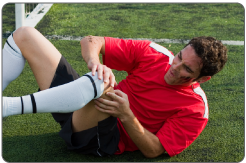 Excess Stress - Without exercise or activity, muscles can weaken and your knee no longer has the muscle support it needs to move correctly. This can cause excess load on the knees and hips or your weight may be distributed unevenly within your knee joint. Uneven distribution of weight will put extra stress on some areas compared to others leading to abnormal wear and tear on the stressed areas. In addition, if you are overweight, the knee joints have to work harder to carry a greater load causing more stress on the tendons, ligaments, muscles, bones, and bursae in the knees. The excess stress can lead to irritation and inflammation of any of the soft tissue over time, including the infrapatella bursa. Overuse Injury (Chronic) - Excessive friction, or rubbing, on the infrapatella bursa can aggravate it over time. If your work or exercise routine requires frequent climbing, running, jumping, or hiking you may be at higher risk of infrapatella bursitis due to the frequent knee bending. This risk increases if there is anything that many cause abnormal wear and tear within the joint.  Pressure on the Bursa - Work and frequent activities that place repetitive pressure on the infrapatellar bursa can cause infrapatellar bursitis. Although the bursae in your knee function as cushions to protect the tendons and other soft tissue, frequent kneeling during your work or activities often creates more stress than they can handle. The excess pressure causes the bursa to become irritated and inflamed, leading to swelling and thickening of the bursa lining. When kneeling on hard surfaces, knee pads are recommended to treat or prevent infrapatellar bursitis. Infection (Septic Bursitis) - The closer the bursa is to the surface of the skin, the more likely the chance of infection from specific bacteria that are commonly found on the surface of the skin. This infection is known as septic bursitis and common bacteria that create this infection are known as Staphylococcus Epidermis (or Staphylococcus Aureus). This bacteria can affect the bursa if the knee is cut or scraped, allowing it to get under the skin. How Do You Treat Knee Bursitis? |
      |


